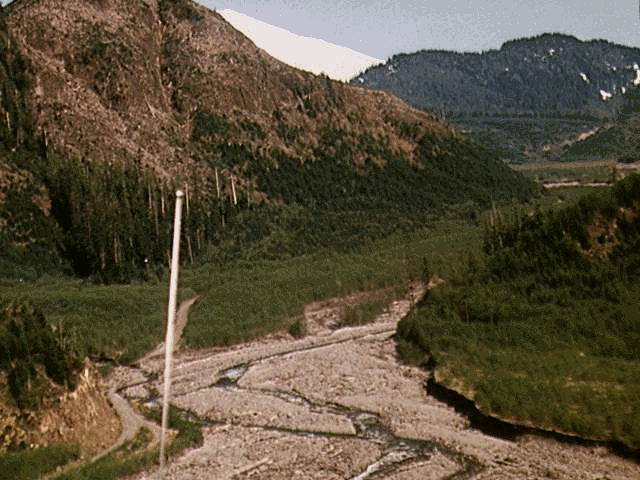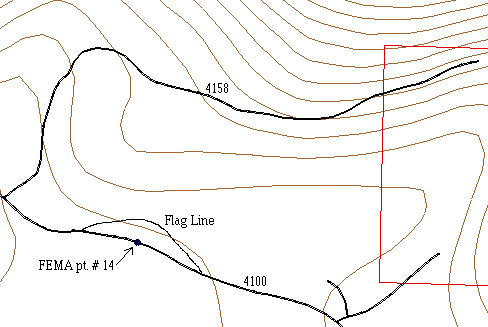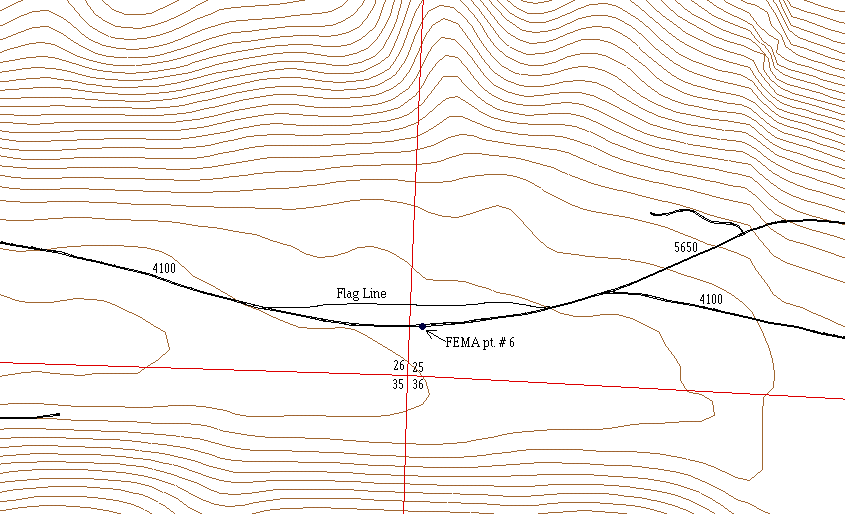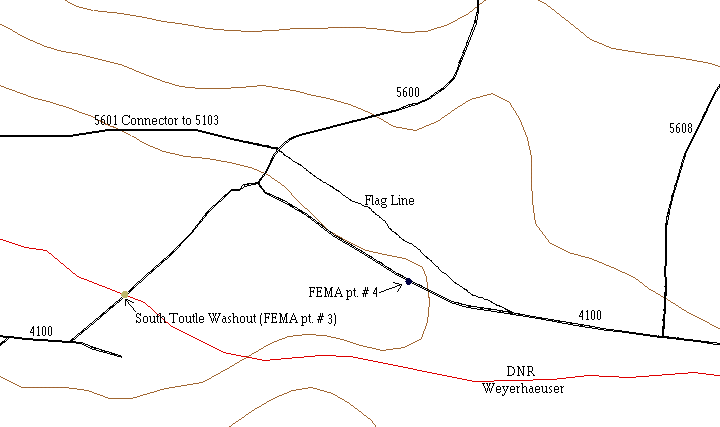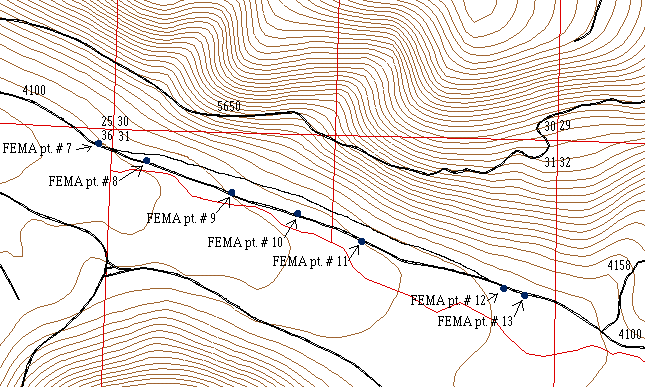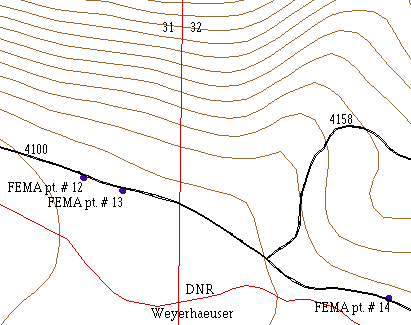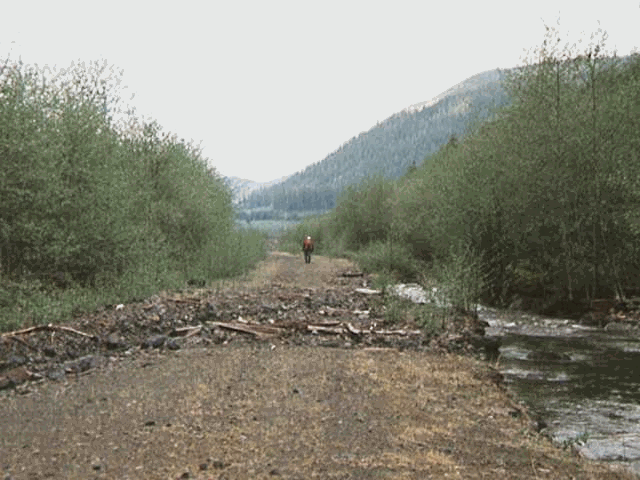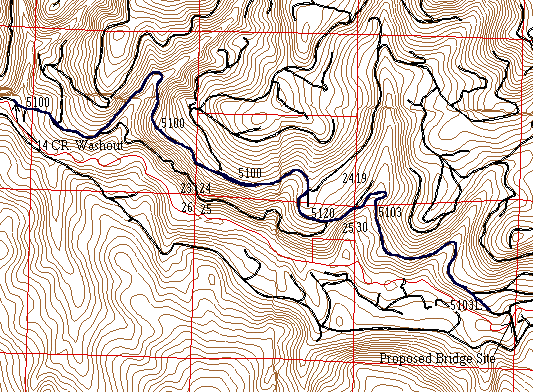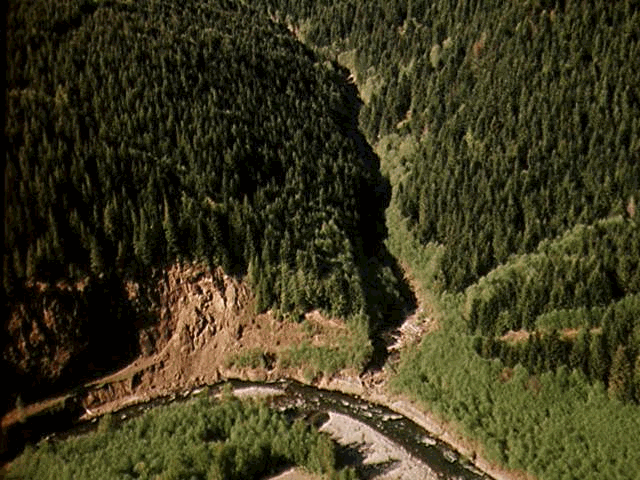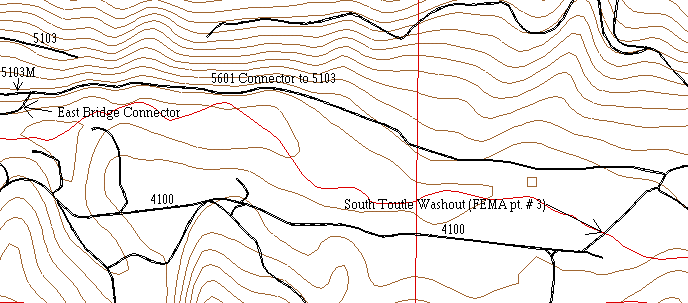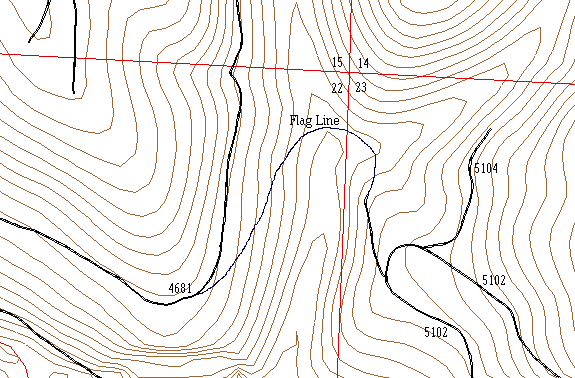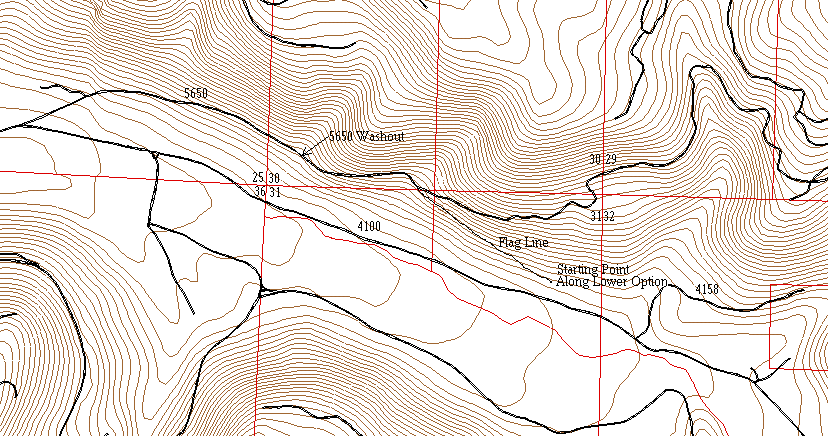Location: Approximately 1000 feet southwest of 4100/4158 junction
Background: Access to the 4100 mainline on the north side of the South Toutle River by Weyerhaeuser was closed by the failure of the original bridge crossing approximately 1 mile upriver of the current recon area. This access provides an alternative to circuitous haul routes in moving volume to the Castle Rock area. For environmental/administrative reasons, reconstruction of the original crossing is not possible and alternative sites are being considered. The value of an alternative crossing is significant in avoiding the high haul costs associated with routes located on the south side of the river. This site was chosen as the most likely alternative because of the presence of a rock outcrop that substantially decreases the width of the floodplain at this point.
Procedure: In general, the analysis of this site was limited to visual observations with limited use of an Advantage laser to provide reasonably accurate estimates of vertical and horizontal distances.
Site Description: The south edge of the floodplain is generally low-profile, erodible material with the exception of the rock outcrop. The rock outcrop appears to be fairly competent on the west and north sides and relatively poor on the east side. The initial face of the rock outcrop is approximately 50 feet in height (from the floodplain). The visible upper face of the outcrop is approximately 20 feet in height but appears to increase in height toward the back. The north edge of the floodplain is consistently low-profile, erodible material approximately 25 feet in height. The width of the floodplain from the rock face to the north edge is approximately 375 feet.
Comments: As the narrowest local portion of the floodplain, this site was considered to be most suitable for a potential bridge site. Though no alternative is available, this site is generally unacceptable as a bridge site. Considering the width of the floodplain, the expense of a full span would be prohibitive. Potentially, a through fill could be constructed on the non-flowing portion of the floodplain and a bridge installed over the flowing channel. Such a structure would require substantial engineering to maintain any chance of integrity during peak flows. The probable and chronic failure of such a structure would pose substantial monetary and environmental risk. In addition to the width of the floodplain, the differential in height (50 feet or more) between the north bank and the rock outcrop would make construction of a bridge site costly, if possible at all. In general, this area is unsuitable as a bridge site and additional consideration of this site is not warranted.
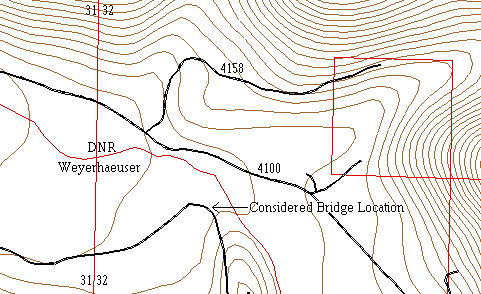
Figure 9.1 Overview of area where the considered bridge site was located
